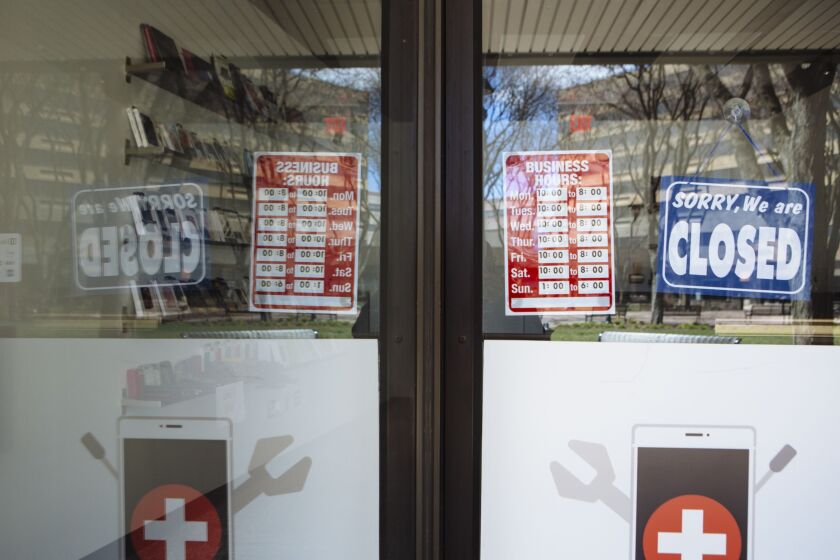The Small Business Administration and the Treasury Department unveiled a simpler loan forgiveness application for the Paycheck Protection Program to reflect changes in the PPP Forgiveness Act, which was signed into law this month and provides more flexibility to small businesses to receive forgiveness on their SBA-backed loans.
The PPP was included as part of the CARES Act, the $2.2 trillion program that included economic impact payments to individuals and aid to businesses in response to the novel coronavirus pandemic. The program initially launched on April 3 with $349 billion in funding to help small businesses keep their doors open and retain their employees. The loans would be forgiven as long as businesses retained their employees for up to eight weeks.

Justin Cooper leads Orrick's Finance Sector and is a member of the firm's Board. He also serves as co-leader of Orrick's Public Finance department and chair of the firm's nationally prominent housing finance group.
Zack Schuler is the Executive Chairman and Founder of NINJIO, a leading cybersecurity awareness training company. With over 1,000,000 viewers a month, NINJIO empowers employees at some of the world's largest organizations to protect themselves against cyberthreats and scams. Prior to NINJIO, Zack founded Cal Net Technology Group, an I.T. Consulting and Security firm in 1995. Zack grew Cal Net into one of the larger MSPs in Southern California before selling the company to a private equity firm in 2013.

Mary de Wet has about 25 years of experience in financial journalism. Before joining American Banker, she led the Dow Jones Newswires Americas team in covering corporate disclosures and analyzing news from Canada to Brazil. Her articles have appeared in The Wall Street Journal, MarketWatch and Barron's.
Follow her on X at @MarydeWet
However, many small businesses had trouble accessing the loans or applying for them, and the funding quickly ran out as larger companies managed to get the loans with the help of their banks. Congress provided another $320 billion and the program resumed on April 27. But the rules and eligibility and forgiveness criteria have been changing constantly, prompting many businesses to take a wait-and-see attitude. Around $120 billion to $130 billion is still left in the program, and it doesn’t run out until June 30. Lawmakers have expressed frustration that the Treasury and the SBA are not providing more transparency about which businesses have gotten the loans and for how much.

In an effort to encourage more businesses to sign up and to alleviate concerns about being able to get the loans forgiven for businesses like restaurants that haven’t been able to open to customers, Congress provided more flexibility by passing the Paycheck Protection Program Forgiveness Act earlier this month. It extends the covered period from eight weeks to 24 weeks. It also amends the requirement that no more than 25% of the loan forgiveness amount be attributed to non-payroll costs and allows up to 40% to be used for non-payroll costs. The bill also included several other changes, such as extending the deferral of payments of loan principal, interest and fees, from the current six months, until the date when the SBA pays the forgiveness amount to the lender.
The new loan forgiveness application from the SBA reflects these changes. Along with revising the full forgiveness application, the SBA is also introducing a new EZ version of the forgiveness application that applies to borrowers who:
- Are self-employed and have no employees; or
- Did not reduce the salaries or wages of their employees by more than 25%, and didn't reduce the number or hours of their employees; or
- Experienced reductions in business activity as a result of health directives related to COVID-19, and did not reduce the salaries or wages of their employees by more than 25%.
The EZ application requires fewer calculations to be done and less documentation is needed for eligible borrowers. Details about the applicability of the various provisions are available in the instructions accompanying the new EZ application form.
Both applications give borrowers the option of using the original eight-week covered period (if their loan was made before June 5, 2020) or the extended 24-week covered period provided under the new law. The SBA and Treasury said the changes would result in a more efficient process and make it easier for businesses to realize full forgiveness of their PPP loan.
Click here to view the EZ Forgiveness Application.
Click here to view the Full Forgiveness Application.
Separately, the payroll company Paychex released the PPP Loan Forgiveness Estimator and Forgiveness Report as part of its Paychex Flex set of cloud-based HR software to help small businesses keep track of their PPP loans and loan forgiveness requirements last week. It includes changes from the PPP Forgiveness Act. Accountants can access the Forgiveness Estimator for each of their clients through the Paychex AccountantHQ dashboard to provide more strategic consultation and help clients optimize PPP loan forgiveness.
Another company, Smart Communications, introduced a PPP Loan Forgiveness Application Solution on Wednesday to simplify applications and speed processing for banks and other lenders.

